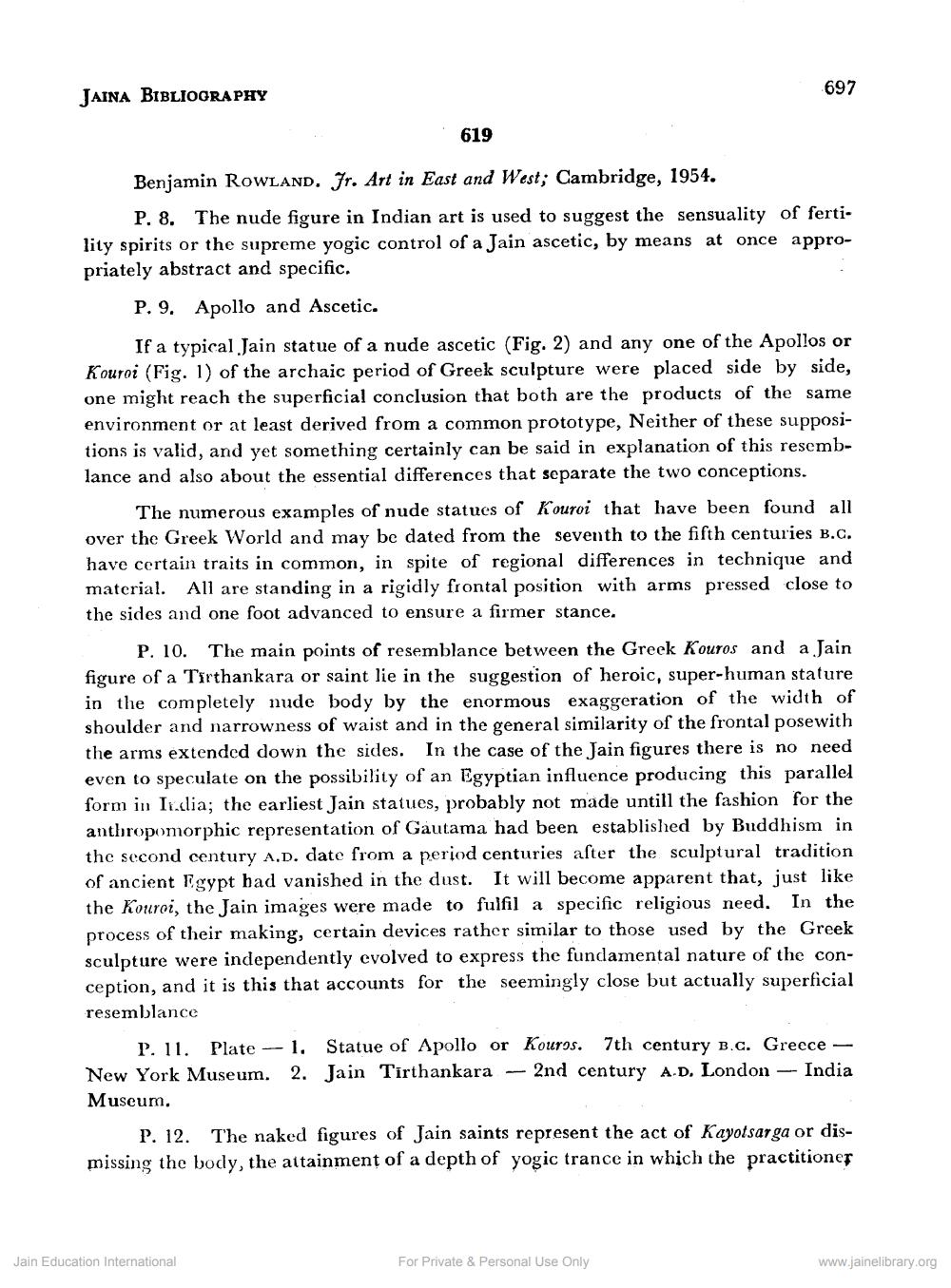________________
JAINA BIBLIOGRAPHY
619
Benjamin RoWLAND, Jr. Art in East and West; Cambridge, 1954.
P. 8. The nude figure in Indian art is used to suggest the sensuality of ferti lity spirits or the supreme yogic control of a Jain ascetic, by means at once appropriately abstract and specific.
697
P. 9. Apollo and Ascetic.
If a typical Jain statue of a nude ascetic (Fig. 2) and any one of the Apollos or Kouroi (Fig. 1) of the archaic period of Greek sculpture were placed side by side, one might reach the superficial conclusion that both are the products of the same environment or at least derived from a common prototype, Neither of these suppositions is valid, and yet something certainly can be said in explanation of this resemb lance and also about the essential differences that separate the two conceptions.
The numerous examples of nude statues of Kouroi that have been found all over the Greek World and may be dated from the seventh to the fifth centuries B.C. have certain traits in common, in spite of regional differences in technique and material. All are standing in a rigidly frontal position with arms pressed close to the sides and one foot advanced to ensure a firmer stance.
P. 10. The main points of resemblance between the Greek Kouros and a Jain figure of a Tirthankara or saint lie in the suggestion of heroic, super-human stature in the completely nude body by the enormous exaggeration of the width of shoulder and narrowness of waist and in the general similarity of the frontal posewith the arms extended down the sides. In the case of the Jain figures there is no need even to speculate on the possibility of an Egyptian influence producing this parallel form in India; the earliest Jain statues, probably not made untill the fashion for the anthropomorphic representation of Gautama had been established by Buddhism in the second century A.D. date from a period centuries after the sculptural tradition of ancient Egypt had vanished in the dust. It will become apparent that, just like the Kouroi, the Jain images were made to fulfil a specific religious need. In the process of their making, certain devices rather similar to those used by the Greek sculpture were independently evolved to express the fundamental nature of the conception, and it is this that accounts for the seemingly close but actually superficial resemblance
P. 11. Plate - 1. Statue of Apollo or Kouros. 7th century B.C. Greece - New York Museum. Jain Tirthankara 2nd century A.D. London India
2.
Museum.
Jain Education International
P. 12. The naked figures of Jain saints represent the act of Kayotsarga or dismissing the body, the attainment of a depth of yogic trance in which the practitioner
For Private & Personal Use Only
www.jainelibrary.org




